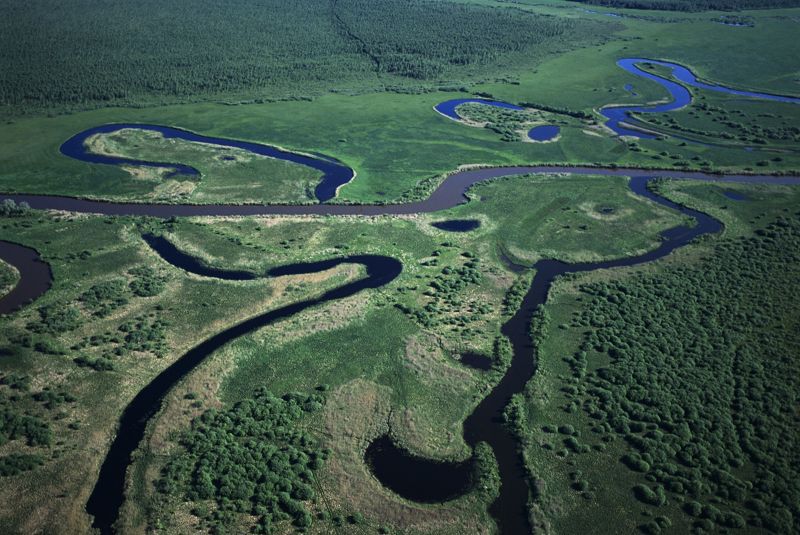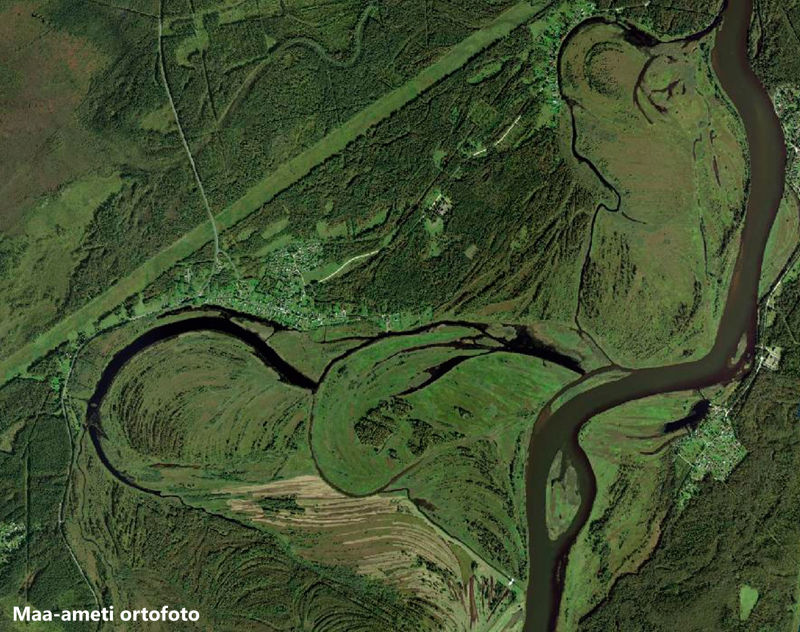- What does the river flow rate depend on?
- Which sections can the river be divided into?
- Why do rivers meander?
The flow rate of rivers varies
Some rivers flow slowly, some fast. The flow rate depends primarily on whether the river is located in a flat and low area, or whether the river starts from a highland. The greater the elevation difference between the source and the mouth of the river, the bigger the river gradient, the faster the river flows.
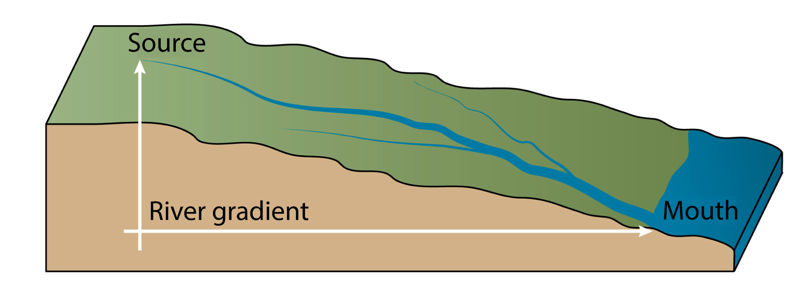
Rivers do not have the same flow rate along their entire length, each river has faster and slower sections. What does it depend on?
The flow rate also differs in the same area in the different parts of the riverbed. Water flows faster on its surface than near the bottom, and faster in the middle of the river than near its shores.
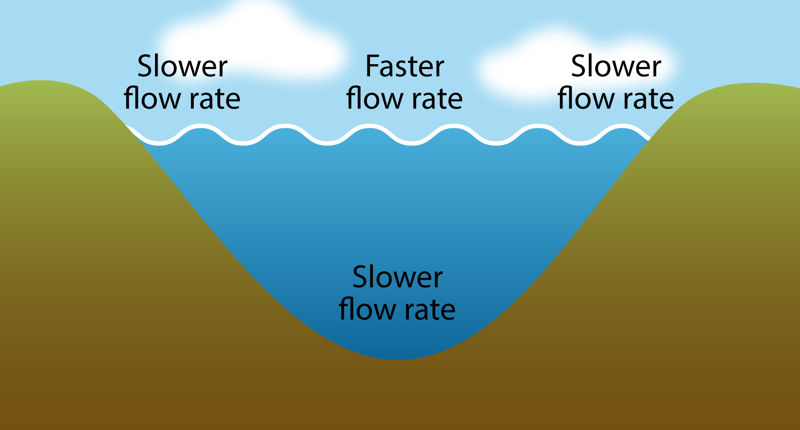
Running water crushes against the shore and carves the bottom and sides of the riverbed, tearing up rock particles, gravel, sand and mud. The sharp edges and corners of the rock particles wear out when they move along with the flowing water, crashing and bumping into each other. Over time, they become thinner and rounder. The flowing water evens weathers the large stones on the riverbed, so smooth that you can slip and fall when you step on them. The finer sediments, sand and clay, are easily picked up by the flowing water, the coarse gravel rolls along the riverbed. Thus, flowing water shapes the ground: near the source, it deepens the riverbed, crushing and weathering rocks, while the river's mouth becomes flatter as the flowing water brings along finer sediments.
Think!
- How does the river's gradient affect the flow rate?
- In addition to the river's gradient, the tributaries and distributaries also affect the flow rate of the mainstem. What impact do they have on the flow rate?
River features
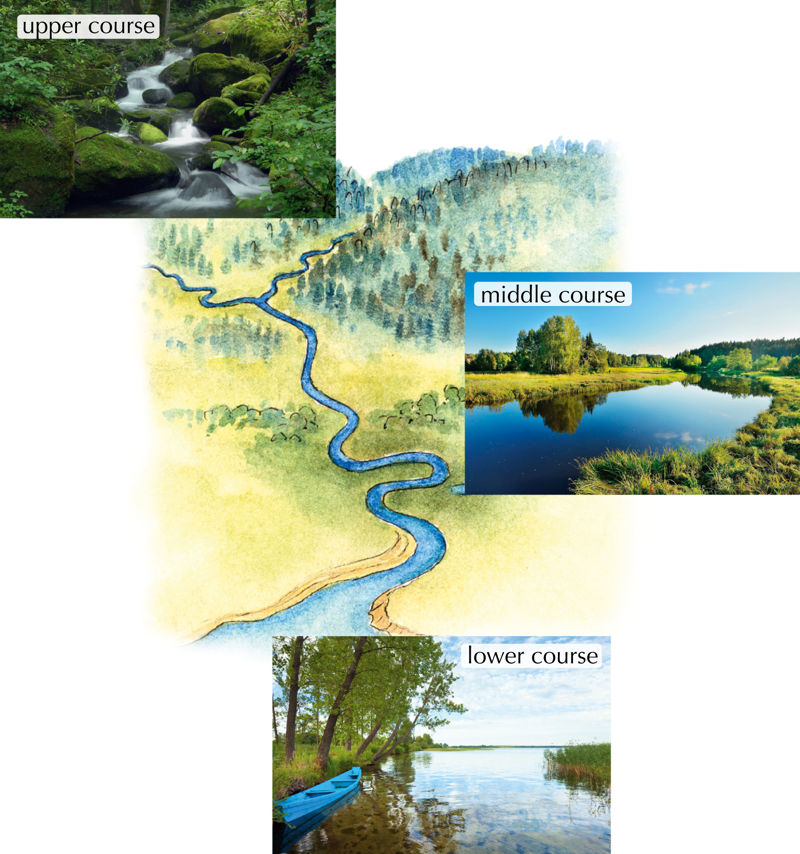
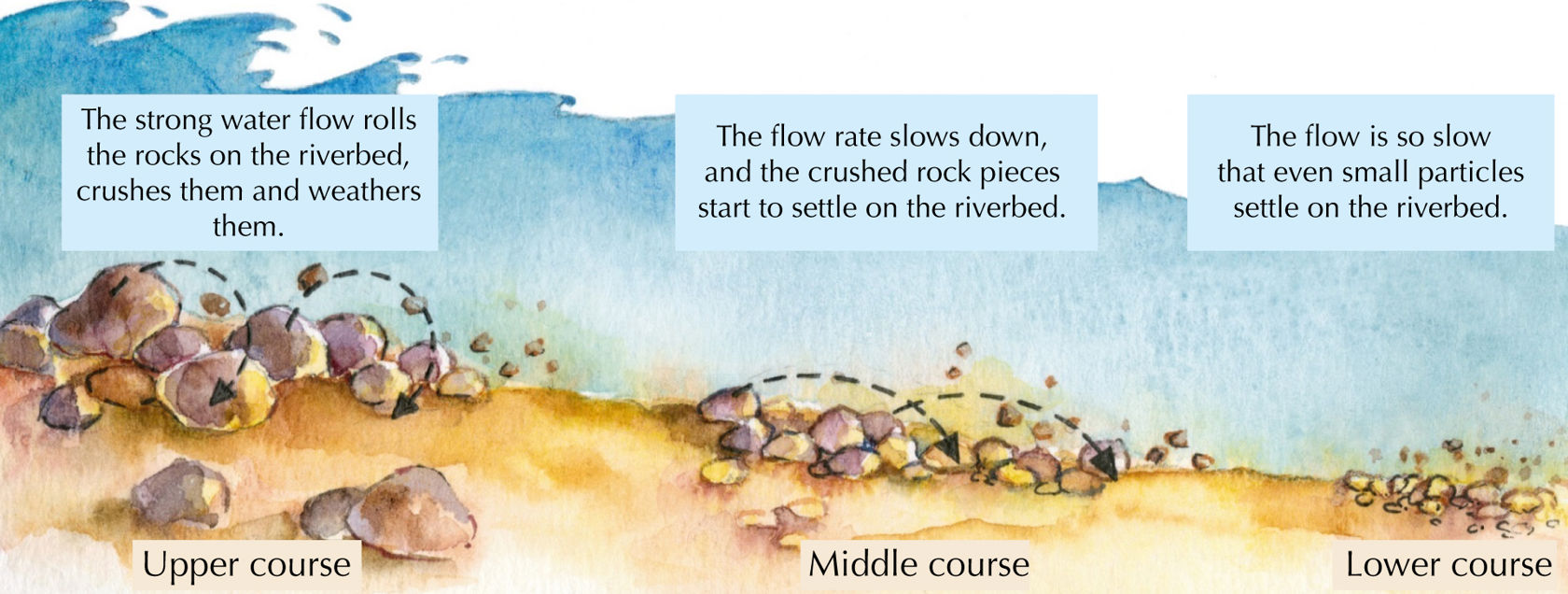
Think!
- When the fine sand settles on the riverbed in the slow-flowing parts of a river, it forms sandbanks that slowly move along with the river's flow. Which slope of the sandbank is steeper, the one towards the source, or the mouth? Why is that?
The flow rate is slow here, which is why the sand and clay settle on the riverbed –
The river is narrow and fast-flowing here. The water flow has enough force to roll and crush even larger stones –
The river is more water-rich here, but the flow slows down, and the water can only move smaller rocks –
The shape of the river changes over time
A river never flows straight towards the sea; it has to carve its way around the hills. The flowing water erodes the banks and creates bends and curves called meanders. You can see this when you hike along the river bank, or look down from a plane's window. The same river meanders more in some sections than in others.
The largest meanders are formed on slow-flowing rivers of flat plains. The river flows faster on the outside of the meander, crashing into the bank with force and carving it steeper, forming a river cliff. As the fast-flowing water keeps eroding the soil and rocks, the river cliff moves deeper and deeper into the flat area of land next to the river, called a floodplain. The opposite bank is called a slip-off slope since water moves so slowly there, it hardly touches the bank. Sand and clay settle to the bottom and accumulate, slowly widening the slip-off slope and making it shift towards the river. This way, the river becomes more and more meandering over time.

Sometimes the river carves itself a new flow path. The location of a riverbed usually changes over a long period of time, in decades and centuries. Sometimes, however, the river can break through the meander banks to form a straighter flow path with a single flood, and the new riverbed gets separated from the old meander. The lake formed from the old meander is called an oxbow lake since it resembles an oxbow, a u‑shaped metal pole that fits around the neck of an ox.
Important terms
- river gradient – the slope of the river, measured by the elevation difference per certain distance
- flow rate – the speed of the water movement in the riverbed
- river cliff – a vertical bank that forms on the outside of a meander where the water cuts into the floodplain
- slip-off slope – the flat bank on the inside of the meander where sediments accumulate
- oxbow lake – a u‑shaped lake that is formed when a meander is cut off from a river
I now know that…
The flow rate of a river depends primarily on the river gradient. The flow rate also varies across the riverbed. In each major river, we can distinguish the upper, middle, and lower course based on the characteristics of the river, i.e. the flow rate, and the amount of water. Rivers become more meandering over time.
